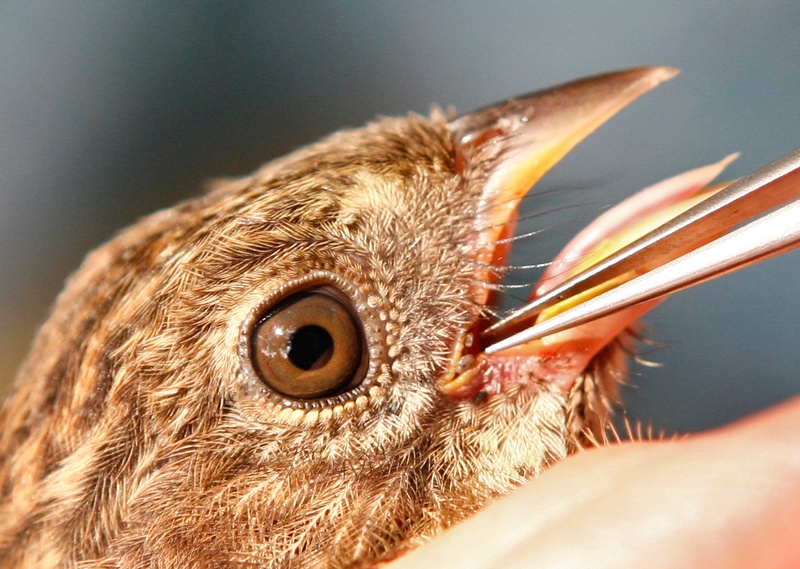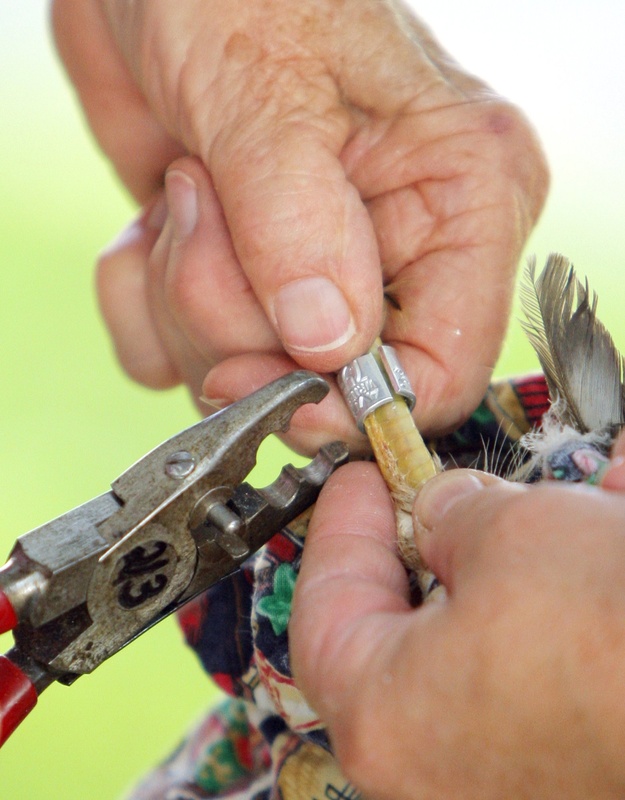Fall migration is an exciting time for birders and also for bird banders. Banding stations are gearing up in anticipation of a flood of regular migrants and who knows what surprises.
The Bird Banding Lab, a federal agency in the U.S. Geological Survey, coordinates banding activities of native North American birds. To band native birds, one must obtain a banding permit, possible only after extensive experience in assisting a licensed bander.
Bird banding has provided a major tool for the study of birds. The first banding of birds we know of was done by John James Audubon in eastern Pennsylvania. He tied some aluminum wire to some nesting Eastern phoebes and found that the birds returned the following year to nest.
Licensed banders contribute to our understanding of bird migration, reproduction and population dynamics. Banding allows the individual identity of birds to be known.
In the United States, a bander is issued aluminum rings, each with a unique nine-digit number. Birds are captured, either with special live traps or mist nets that birds do not see and get tangled in. With the bird in hand, a band is opened, placed around a bird’s lower leg and then closed with specially made pliers.
Data on age, sex, fat score, wing length, parasite presence and other information are recorded. The bird is then released.
For larger birds like geese or eagles, the band number can often be read directly with a spotting scope so that a bird need not be recaptured to identify it individually. However, the bands for most birds are so small that it is impossible to read the number at any distance. To identify the band number of a small bird like a nuthatch, the bird must be recaptured.
The Bird Banding Lab serves as the central repository for all banding information. A bander submits data (band number, species of bird, age and sex of bird, banding location) to the lab. If another bander captures a banded bird or if someone finds a dead bird with a band, a call to the Bird Banding Lab will allow the observer to know when and where the bird was banded. The lab also notifies the original bander that one of her/his birds was re-encountered.
The millions of banding records and the thousands of recapture records are available to interested parties. I have used banding data on pine siskins, common redpolls and other finches to examine changes in the southward winter migration as affected by an increase in bird feeding over the past quarter of a century.
Many banders now use color bands in addition to the aluminum bands placed on captured birds. Color banding requires special permission from the Bird Banding Lab to insure that banders in the same area are not duplicating banding combinations. using a unique combination of color bands, one can identify individual birds without having to recapture them and read the number off the aluminum band. I use this technique with black-capped chickadees and red-breasted nuthatches.
Here are a few of the ornithological discoveries that have been made possible by banding birds.
• Arctic terns are known to migrate from pole to pole, twice a year.
• By following the disappearance of banded birds (presumably because they died), we know that most small songbirds have a 50 percent chance of dying every year.
• We know much about where different birds winter. For instance, palm warblers do an interesting criss-cross in migration. Populations breeding in the upper Midwest and the Prairie Provinces migrate southeast to winter in Florida while our eastern palm warblers migrate southwestward to winter along the Gulf Coast.
Occasionally rock pigeons are seen with one or more bands. Because pigeons are not native species, one does not need a banding permit to band those birds. So, pigeon fanciers often band their birds with particular color bands so they can be easily identified. These band combinations are not regulated by the Bird Banding Lab, so one must consult pigeon fancier clubs to try to track down the owner of a sighted racing or homing pigeon.
STILL BLACK SCOTERS
In the last column, I detailed taxonomic changes made recently by the American Ornithologists Union’s Check-list Committee. One change was that black scoters in North America are now considered a separate species, called Melanitta americana, from similar scoters in the Old World. However, the committee has reversed itself on the common name. The common name of our scoters will remain black scoter rather than changing to American scoter as originally reported.
Herb Wilson teaches ornithology and other biology courses at Colby College. He welcomes reader comments and questions at:
whwilson@colby.edu
Copy the Story Link
Send questions/comments to the editors.




Success. Please wait for the page to reload. If the page does not reload within 5 seconds, please refresh the page.
Enter your email and password to access comments.
Hi, to comment on stories you must . This profile is in addition to your subscription and website login.
Already have a commenting profile? .
Invalid username/password.
Please check your email to confirm and complete your registration.
Only subscribers are eligible to post comments. Please subscribe or login first for digital access. Here’s why.
Use the form below to reset your password. When you've submitted your account email, we will send an email with a reset code.